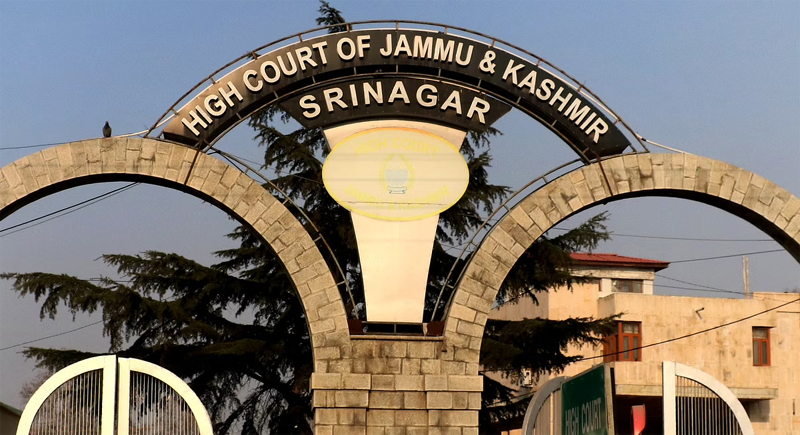Excelsior Correspondent
Srinagar, Sept 17: High Court today said that the ban on new constructions in and around 200 meters of the periphery of Dal lake should continue.
Division Bench of Chief Justice Pankaj Mithal and Justice Puneet Gupta said it is felt that to balance the needs for sustainable development and economic prosperity of the Dal lake area, passed certain clarifications and guidelines to ensure that the provisions of the new Master Plan are not abused with regard to water bodies in general and Dal lake in particular.
Court while passing these clarifications and modifications recorded that the order shall supersede and be in modification of all earlier orders passed by the Court in the present proceedings.
Court clarified that the orders passed in the matter, starting from 2002 expressly prohibited new construction work and even carrying of building material in and around 200 meters from the periphery of Water Bodies and Dal Lake. “The only exception provided was for the purposes of grant of permission for the repairs and renovation of the existing buildings/structures falling within 200 Meters of the Water Bodies/the Dal Lake”, Court clarified.
Court also clarified that the Master Plan-2035, subject to the outcome of the present proceedings, relaxes the 200 meter limit, by defining Buffer Zones of 20 to 100 meters from the periphery of the concerned water body, depending on the area concerned.
The Master Plan has categorized the utilization of lands in the buffer zone for the purposes of Parks and Gardens.
Terming the lake as ‘Crown Jewel’, Court clarified that there is still need to ensure the preservation of lake and the prohibition contained in one of the court orders with respect to constructions within 200 meters of the periphery of Dal Lake shall continue to hold the field that is the buffer zones for Dal Lake in the Master Plan 2035 shall be read to be 200 meters.
However, with respect to other water bodies identified in the Master Plan 2035, the DB clarified that the prohibition on construction contained in 2002 order shall stand modified to the extent that the prohibition shall apply in terms of the distances and buffer zones identified by the Master Plan itself.
The land use for Parks and Gardens ranges from, play fields and floricultures nurseries, to amusement parks and swimming pools mentioned in the MP court said, the same is aimed at preserving the natural beauty and ecology of the area while opening avenues of sustainable development.
The Court, in this regard, felt that many of these uses would require construction of a permanent nature, but added that developments and constructions in this ecologically sensitive area may negate any progress made in the past 20 years by the efforts of the authorities concerned and the Court.
Court as such clarified that no new permanent construction shall be allowed in these Buffer Zones.
Court on repairs and renovations of existing structures clarified that where plinths have been existing prior to the orders passed by the Court 2002, there shall be no barrier on any extent of repair, renovation or even reconstruction of such buildings to ensure that the structures are safe and in compliance with building bye-laws. “Fresh and new construction of permanent structures apart from the existing plinth would remain prohibited”, the Court clarified while modifying all its earlier orders.
Court directed that while considering the utilization of buffer zones should be mindful and impose appropriate conditions on such projects so that the activities do not hamper or interfere with the earlier orders passed by the Court with regard to the upkeep of the lakes and water bodies.
“Placing some of the houseboats on land adjacent to the Dal Lake, may also reduce the burden on the lake while preserving livelihoods and traditional tourism experience without need for any permanent constructions or structures and shall also be considered a part of permissible uses in the buffer zones”, Court suggested.
Court said the applications with regard to developing buffer zones should be utilized by the authorities that the persons interested in the projects are obligated to carry out landscaping, afforestation works, creation of local employment, lake cleaning and dredging works for the betterment and sustainable development of the area.
The court recorded that the Master Plan is open for revision and modification as per the advice of the experts including the Town Planners, Environmentalists and the other stakeholders as also for those who are responsible for the Smart City Project.
Advocate General has been directed to take appropriate re-examine the area of the buffer zones around Dal Lake and to place the same on record within six weeks after providing a copy of the same to the amicus curiae who may file his objection and suggestions.
Trending Now
E-Paper


